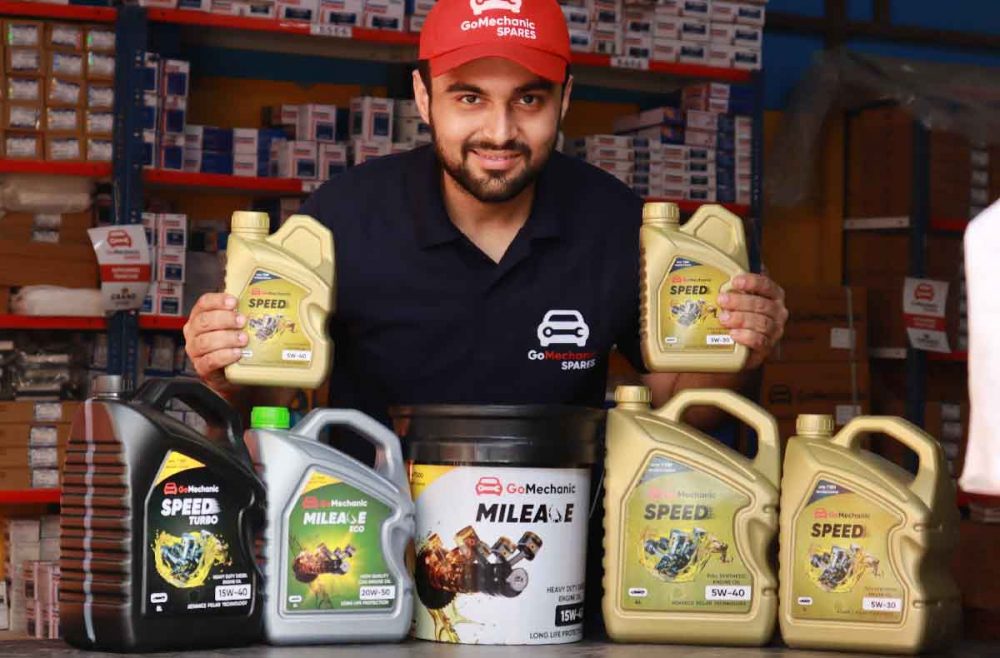Engine oil; the lifeblood of a vehicle. Also known as motor oil, lubricant, lube. An engine plays a crucial role in determining the life and longevity of a vehicle. Put simply, engine oil prevents the metal parts and gears inside an engine from tearing themselves apart by reducing friction and heat while also cleaning it up of any sludge or external debris.
But, what If we told you, not all oils are formulated equal, there are some distinct factors that differentiate various kind of engine oils. So, today let’s take a look at 10 such common engine oil terminologies and jargons that you should know.
Please note that we will not be covering other engine oil related terms such as synthetic, semi-synthetic, mineral etc and will be focussing more on other common engine oil related jargons.

Read: Engine Oil | A Comprehensive Guide | Everything You Need To Know
-
Base Oil
Base oil is used to manufacture different types of lubricants like grease, specialised lubricating oils and different grades of engine oils. Different products require different compositions and properties in an oil. Base oil is basically refined crude oil into which additives are mixed to achieve various different formulations as peruse.
-
Additives
Additives are external chemical compounds that are added to the base engine oil to add or enhance certain properties such as lubrication, performance, sludge protection, wear-tear resistance etc.
Different additives can add properties like anti-wear, anti-foam, anti-corrosion, acid-neutralization, viscosity-maintenance, detergency etc.
-
Viscosity
Engine oil viscosity refers to how easily and without resistance oil can flow at a specified temperature and condition. Put simply, thin oils have lower viscosity and flow more easily at low temperatures, whereas thicker oils have a greater viscosity and show more resistance to flow under certain conditions.
High viscosity oil performs better and holds its molecular integrity at high temperatures and greater loads. Low viscosity oils reduce friction in engines and help engines start quickly during cold weather.
-
Running Temperature
Running temperature is described as the optimum temperature of the engine oil at a certain load. Engine oil temperature is one of the most crucial factors in engine oil dynamics.
-
API (American Petroleum Institute)
You may have also seen API scribed on to the bottle, which stands for American Petroleum Institute. The American Petroleum Institute is a U.S.A trade association for the oil and natural gas industry. The API rating of an engine oil covers the performance rating of the oil (e.g. SM for petrol, CF for diesel).
-
JASO (Japanese Automotive Standards Organisation)
JASO or Japanese Automotive Standards Organization is the grading system designed specifically for Motorcycle Engine Oil. JASO was created as the Japanese equivalent to the API (American Petroleum Institute) specifications because those were not suitable for the unique specification needs of modern Japanese engines.
-
Ester
Ester is a variation of generic synthetic engine oil. Esters are collected from natural sources and then synthesized in much smaller quantities than regular synthetic oil.
Ester oils are superior due to their greater bond which has an electrochemical bond because the ester molecule is polar. Ester oils tend to get attracted to metal and stick to it. Ester oils also leave almost no deposits in the engine, if they burn. -
Advanced Polar Technology (APT)
Advanced Polar Technology is a unique engine oil technology that consists of negatively charged electrons infused in the oil that helps it to cling to your car engine and thus provide better wear and tear protection. The technology has opened brand new dimensions in the field of engine oil innovation.

GoMechanic Series Of Two Wheeler Engine Oil The term ‘Polar Attraction Technology’ initially referred to a technology where the molecules used to make a bond with the tensed surface and thus was able to reduce friction and relative wear and tear of the metal surface under extreme conditions. With recent developments in the automotive industry, the ‘Advanced Polar Technology’ also got modified with the introduction of fullerene molecules in the engine oil.
Fullerene is a kind of hollow spheroidal carbon isotopes and is also a popular nano-diamond component in engine oils which reduces friction considerably. Its unique shape traps the engine oil inside its cage-like structure thus providing the twin benefit of reduced friction and increased metal retention capacity.
Looking to buy automotive spare parts for your car? Head to GoMechanic Spares and get a wide range of 100% genuine OEM/OES and Aftermarket spare parts at the best prices.
-
Sludge
Sludge in your car engine forms when the engine oil degrades (ages) and thickens and form a black tar-like substance. Your engine is exposed to continuous wear and tear as well as external agents like moisture, oxidation, and foreign contaminants which find their way inside the engine causing sludge formation.
Sludge formation increases engine running temperature while accelerating wear and tear.
-
Anti-foaming Agent
An anti-foaming agent is a chemical additive to reduce the formation of foam in engine oil. Silicone is popularly added to engine oils to inhibit foam formation and to destroy the surface bubbles or polymer to reduce the count of small internal bubbles.
Also Read: 10 Most Googled Questions About Engine Oil, Answered!






